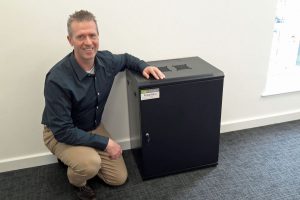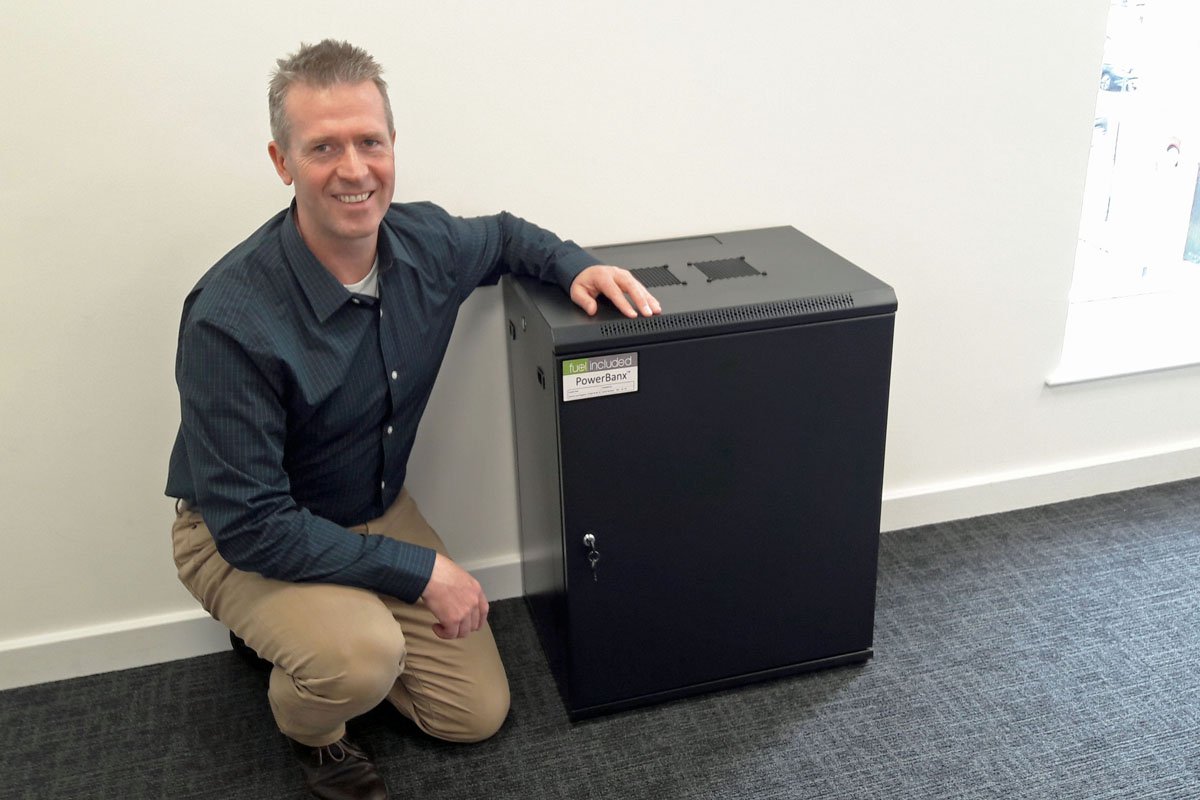The lithium ion battery market is experiencing growth on all sectors, including consumer and industrial applications, electric vehicles, and stationary energy storage systems (ESS).
In fact, there are estimates that the market will double or even triple in size by 2030. This growth is coupled with declining prices, with prices having fallen as much as 73% from 2010 through 2016. These varying market pressures are leading to new insights and advancements in the battery industry.
One of the ongoing discussions in the battery market has been the debate between nickel-manganese-cobalt (NMC) versus lithium-ion phosphate (LFP)-based chemical compositions.

Tanjent’s PowerBanx X battery storage, in black enclosure (Image: Tanjent)
Both technologies have their own strengths and weaknesses. For instance, LFP has a longer lifespan than NMC and is considered more stable, but NMC has a higher energy density. In recent years, the industry has settled this debate with a preference for NMC. This conclusion was likely reached following fast evolution of NMC technology due to its large economies of scale in the mobile phone market.
The new emerging demands in electric mobility may have also played a role in this determination, as NMC composition can have either high specific energy, which is particularly important in the e-mobility market, or high specific power, which is typically more important in the stationary ESS market.
In fact, it is the stationary and the transportation markets that are putting some of the biggest demands on battery technology, and sometimes these requirements can be contradictory, such as c rates and environmental conditions. For the stationary market, especially solar energy storage, the demand for battery storage is being driven by diminishing feed-in tariffs for PV and demand charges, along with the need to stabilize the grid.
Because of their usage in the ESS market, the battery requirements, especially for the residential sector, tend to be focused more on price, ease of installation, interoperability, and energy density. While the transportation sector has requirements that focus more on the need to quickly charge batteries and quick discharge batteries for fast acceleration and speeds. The transportation sector is specifically putting more pressure on battery development to improve energy density of batteries for longer ranges while maintaining battery volume. Last, but not least, safety is of increased concern in the mobility market due to its mass scale of deployment, and automotive standards.
Read more: PV Tech



